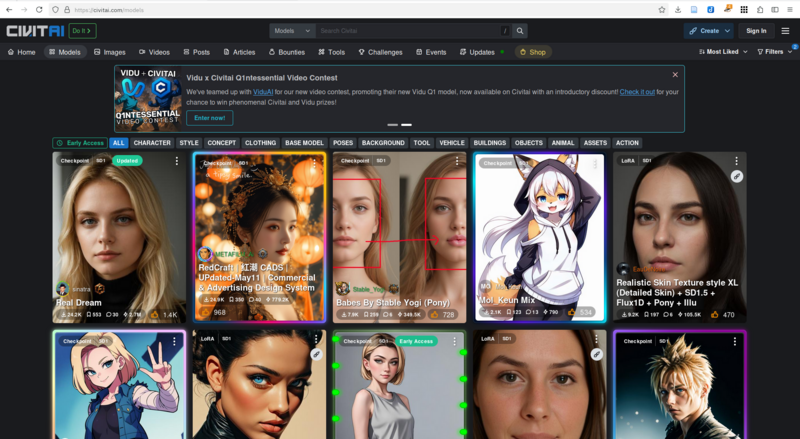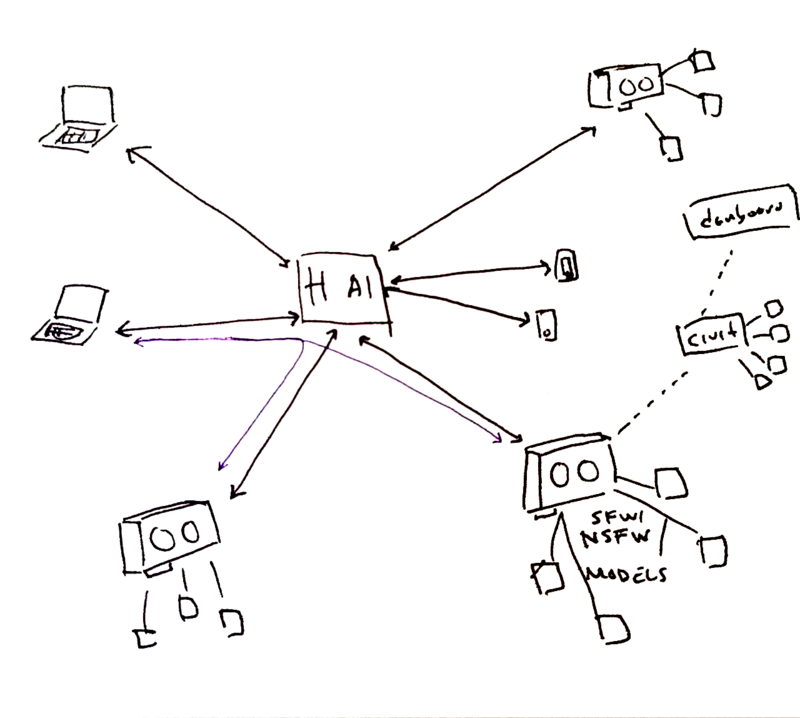Presentation Objects of Interest
Introduction
Aims of this workshop
- To give you an insight into how er are working with AI image creation
- Have a dialogue on possible intersections with your research.
Agenda
- Background (Chr.)
- AI image generation: techniques and infrastructures - evading the conventional platforms and capital interests (Nicolas & Pablo)
- Conversation
The background (Knowledge Servers)
Within a larger project on digitization, democracy and citizenship (SHAPE), we run a project that not only questions the role of Big Tech and platforms in the construction of knowledge, but also on how one might ‘delink’ from capital interests.
We try to speak from the point of view of what you might call grassroots’ internet culture. A culture that had control of the tools and infrastructures for its own existence – what the anthropologist Chris Kelty once called a ‘recursive publics’.
History took us elsewhere. To 'client-server' relations (rather than peer-to-peer).
We speak of this as a new “epistemic infrastructure” (borrowing the term from Celia Lury): An infrastructure for what and how we know things – and not just for how we find information, or use it in other ways.

Our questions
How does grassroots digital culture respond to this development? OR What does technological autonomy look like today?
… What are the strategies for culturally, democratically and environmentally sustainable knowledge infrastructures?
… What are the tensions within technologies?
… How do you provide alterantives/other services and infrastructures for communities?
Our methods
We collaborate with grassroots groups (such as collectives that run such services)
We share a history of being part of this culture ourselves
Our 'amateurism' perhaps even attempts to be ‘undisciplined’ – suspending disciplinary regimes (challenging the conditions under which knowledge occurs)
We run and build services, "knowledge servers":
… a server (within the university ecosystem)
… a library
… a wiki
… an etherpad
… a git repository
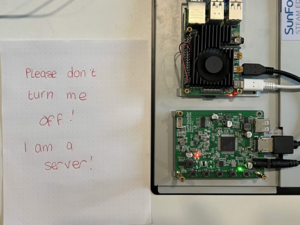
How we proceeded with generative AI
Our outset has been Stable Diffusion - a different visual culture than, say DALL-E.
A journey/mapping of, guided by Nicolas.
Mapping 'objects of interest/necessity'
... Objects, not as manifestations of an ideal (an imaginary of autonomy), but the other way around: in our investigation we have found these objects and we try to draw a map of what autonomy looks like, rather than what it is.
... That is the objects that create the imaginary
... Not what autonomy is, but what it looks like under given conditions.
Resulting in a workshop/exhibition/catalogue, September 2025 (final outcome)
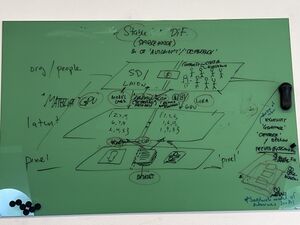
There are things that show
... ‘pixel space’: Images we create or images that are used to create and annotate data sets.
There are things that don't show
… A 'latent space' of models that generate outcomes
… Software and people/communities that use and build on the software, to – for instance – support their own visual culture.
… A level of organization of these people (for crowdsourcing p2p, using virtual tokens)
… A material level of dependencies on units (such as the GPU, minerals, 'dead labour')
AI Horde image generation with a communal infrastructure
Why?
- Monopoly and concentration of power in platform capitalism
- The user is the product
- Governance
- Epistemic closure
Platform economy

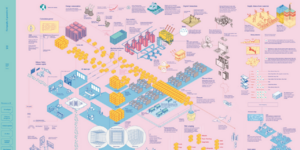
Software

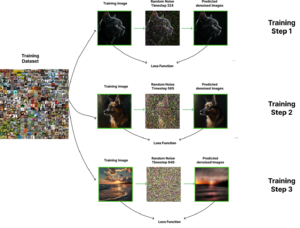


Decentralization
CivitAI
CivitAI is a highly popular platform/repository for distributing AI models and images. In our taxonomy, it's what we refer to as a space between the private and the commons. It's private in the sense that it's focused on individuals sharing their work (e.g., the creation of new models), and commons in the sense that most models can be reused and remixed. It's a repository whose primary purpose is to share resources.
CivitAI has its own currency ("buzz"). It can be purchased or earned by being part of the community (posting, recommending, commenting, etc.). It can be used to leave tips or to order certain models.
It is largely a cultural hub, with its own economy, rules, and aesthetic preferences.
While many, and the most popular models, recreate canon's of beauty and heteronormative standards, civitAI can be read as a hyper-specialisation space beyond big tech. This is where the "amateur modeler" can share their work.
AI Horde
AI Horde is a distributed computing cluster system. Using open source and crowdfunding, it allows users to borrow and lend other computers with graphics cards to use generative AI models.
The system works by creating a directory of "workers" who are part of this network and distributing calls among themselves. In this sense, it is partially decentralised.
As a worker, you can generate "kudos," the exchange currency with which you can also generate images of other workers (more kudos = better and faster models).
Artbot
There are many interfaces for this "decentralised" network of "workers" (since the AI horde software/network is accessible through APIs, access can take many forms)
One is a web-based interface: artbot
Antes de comenzar, haz click en el botón con un ordenador, y busca al "worker" llamado camilla_horde
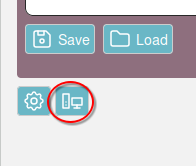
De esta manera sólo utilizaremos la mesa camilla para nuestra generación de imágenes
Explora las opciones de la interfaz, libremente
Artbot interfaz
Interfaces are omnipresent, as we well know. They are, at the same time, somewhat invisible. The material is left aside, along with the complex, it is domesticated or made invisible.
Not only is there a complex system behind it (computational models based on large, obscure databases), but there is also a somewhat invisible intersection between the technical, the cultural, and the artistic (computational, computer science, the amateur modeler, the visual artist, and the average user).
It's not a plug-and-play interface either. While it is a suitable version in which programming knowledge is not required (as in older versions), it is not a blank, tame interface (think of Apple or chatGPT).
There are levers, buttons, sliders, text boxes, nuts and bolts, decisions. The interface is complex, and with it, the power of decision-making expands.
- https://www.patreon.com/posts/nsfw-question-72771484
- https://www.patreon.com/posts/blacklist-72890784
- https://dbzer0.com/blog/ai-powered-anti-csam-filter-for-stable-diffusion/
(qué comunidades hay detrás de estas interfaces?)
Un vistazo al trabajo material detrás de convertirse en un "trabajador":
Conectar con el servidor, la mesa camilla
(imagina que pides permiso para entrar a una casa que no es tuya, pero una vez que te dan permiso, puedes hacer los quieras: cambiar los muebles, ducharte, abrir puertas, pintar la casa, etc)
$ ssh -p 2020 xvs@xenocenter.zapto.org
Crear un espacio único en el disco, donde se instalan las versiones del código necesarias, apartado de otros archivos similares (environment)
(imagina que tienes un horno, y quieres cocinar con dos tipos de guisados casi idénticos. En vez combinar sabores incompatibles en un sólo horno, te haces de otro horno más pequeño, con sus propios ingredientes que hacen sentido entre sí)
$ source camilla_horde/bin/activate
Checar el espacio, uso, y distribución de discos duros
(bueno, yo quiero este nuevo horno chiquito, habrá espacio en la casa?)
$ df -a
Checar memoria RAM, total y disponible
(vale, hay espacio, para el horno, pero cuánto gas puedo usar? algunos de mis modelos, digo, de mis guisados, requieren mucho gas)
$ free -h
Checar memoria VRAM y modelo de la tarjeta gráfica
(resulta que para mis guisados necesito dos tipos de gas, el segundo, un poco más especial es un poco caro, pero muy potente. Este es realmente el ingredient clave para generar xenovisuales)
$ sudo lshw -C display
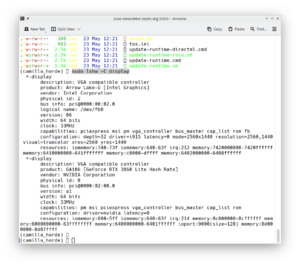
Corre el programa de GPU decentralizados usando python
(pongo mi guisado a hacer, básicamente´)
$ python3 -m venv camilla_horde
Configuración de hordeAI
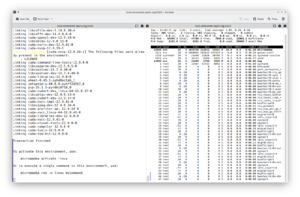
(ah, pero, veámos mis opciones para cocinar, cuáles son los límites? Que guisos quiero tener siempre a la mano? Qué guisos quiero prohibir? Con quien compartiré mi comida? Será picante?)
$ nano bridgeData.yaml
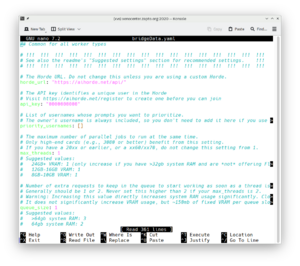
Diálogo
¿Qué significa hacer imágenes de estas maneras?
¿Cómo funciona la gobernanza en estos proyectos?
¿Cuál es la relación entre el ethos de compartir de estos proyectos y su generación de valor?
¿Qué formas toman la economía, el trabajo, los cuerpos?´
pad para escribir en conjunto: https://ctp.cc.au.dk/pad/p/xeno_dialogo
Recursos
Startups funded 2013-2023:
Critical perspective:
AI y materialidad:
- Big data, and only getting bigger https://arstechnica.com/information-technology/2025/05/where-hyperscale-hardware-goes-to-retire-ars-visits-a-very-big-itad-site
Software
- DiffusionBee official website (MAC)
- Diffusion Bee GitHub, AGPL Free Software
- Draw things official website https://drawthings.ai/
- ComfyUI (all platforms), Git Hub, Source
- https://github.com/AUTOMATIC1111/stable-diffusion-webui, Diffusion WebUI aka Automatic 1111
